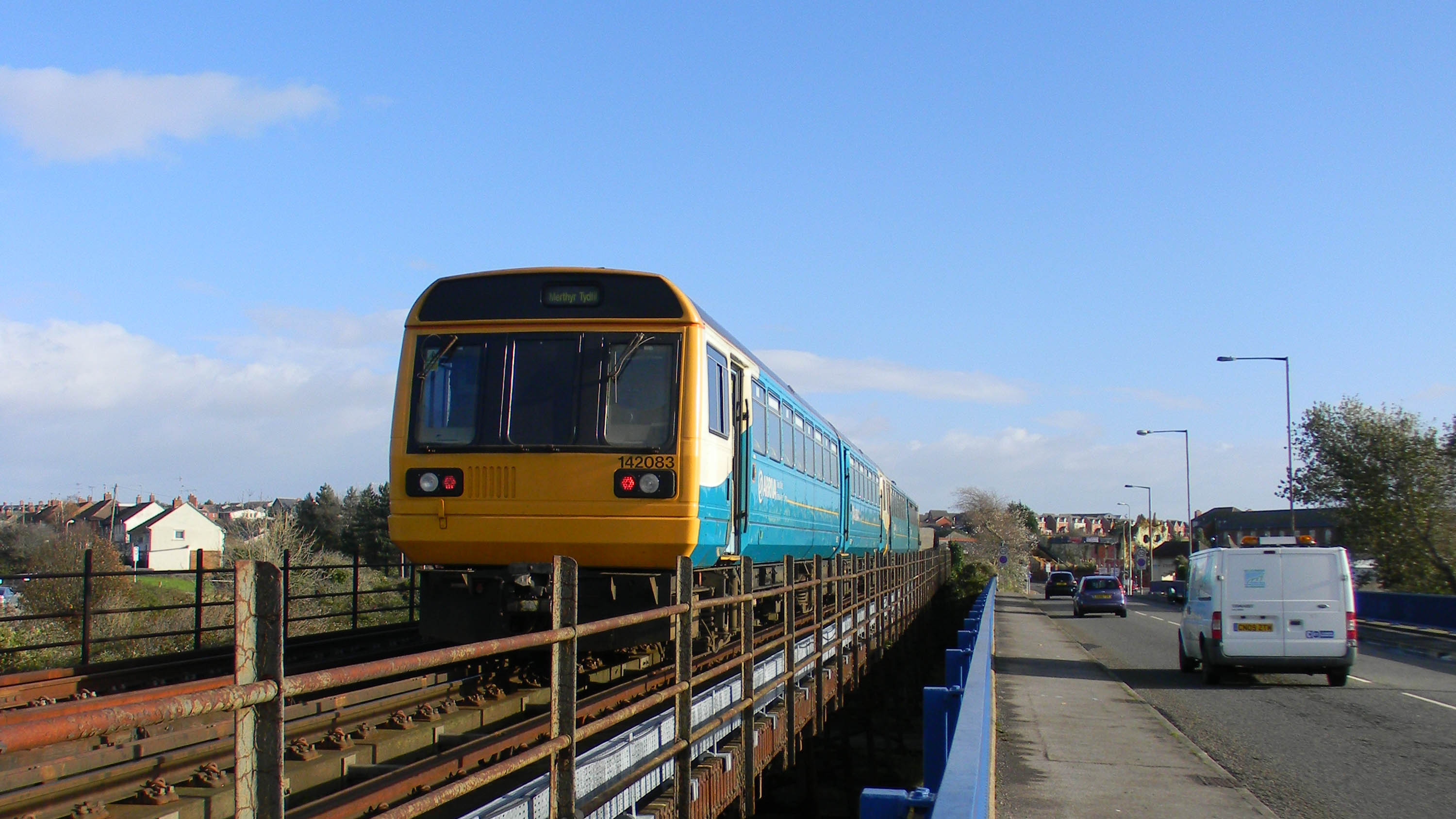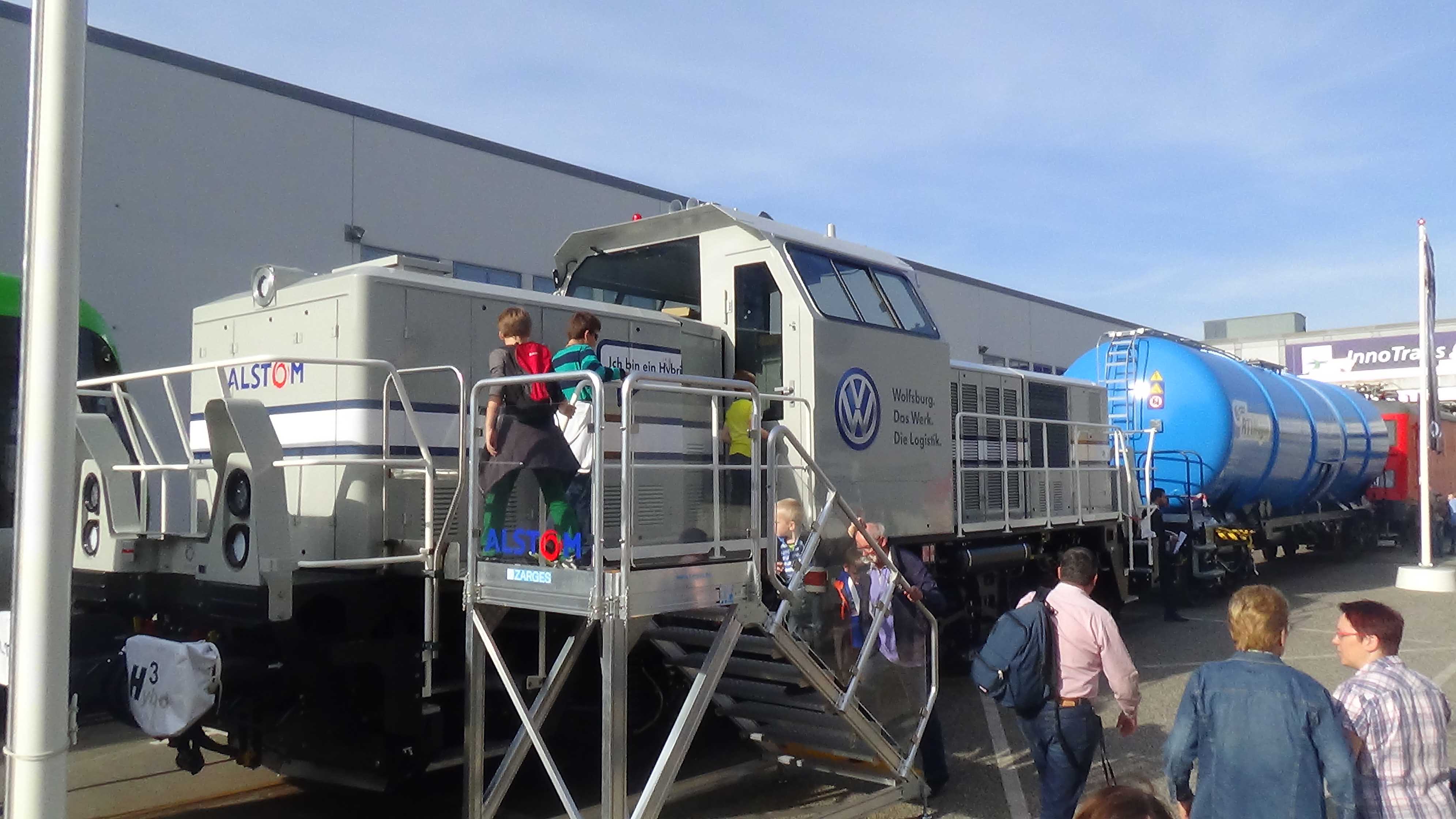WE ARE MANY.
WE ARE RAILFANS.

Railfan-Joe
January 13th, 2022
Locomotive manufacture has been a massive industry over the course of the last 150 years. In many nations, this area of work as been a proud and important part of the world's railways, ensuring that locomotives and their trains are consistently updated, revised and bettered as time and technology has moved on. For the most part, locomotives have been manufactured by standalone businesses, focusing on one thing and one thing only... making products for the railway. But at times, through takeovers, wartime, mergers and other circumstances, companies, conglomerates and organisations from other areas of life have been involved in the railways and locomotive manufacture.
Below, we look at occasions where the worlds of the automobile and locomotive have come together, through large and well known car manufacturers.
- General Motors
For 77 years between 1931 and 2008, General Motors (or GM) was the largest manufacturer of automobiles in the world. It is no surprise then that their influence on so many areas of life was so widespread, going into aircraft parts, military technology and household appliances as well as making cars for many nations outside the USA with Holden (in Australia), Vauxhall (in the UK), Opel (in Europe) in addition to well known domestic brands Chevrolet, Buick and Cadillac. But after acquiring EMC in the 1930s and developing it into EMD, GM also became a big player in locomotive manufacture until 2005. Working with new technologies, a horsepower race and fighting with a rival in General Electric were all aspects of manufacturing that GM was used to with cars and they applied the same ruthlessness to its locomotive business.
 Under GM's EMD banner, locomotives like the SD40-2 and GP30 were built. Pictured above is WE 6383, a Rebuilt EMD SD40-2, in Rook Yard, Pennsylvania. (Public Domain Image by Cutlass). You can learn more about General Motors' connection with another of their models, the GP30, in this article by Gary Dolzall: Corvette On Rails
Under GM's EMD banner, locomotives like the SD40-2 and GP30 were built. Pictured above is WE 6383, a Rebuilt EMD SD40-2, in Rook Yard, Pennsylvania. (Public Domain Image by Cutlass). You can learn more about General Motors' connection with another of their models, the GP30, in this article by Gary Dolzall: Corvette On Rails
- FIAT
In Europe, Italy's FIAT began to manufacture locomotives at around the same time as General Motors under the Fiat Ferroviaria banner. Prior to a majority shareholding from Alstom in 2000, FIAT were the pioneers in making the 'tilting train' technology that was exported to numerous nations for high speed rail, including the German ICE T trains and British Class 390. Its development of this in the 1960s and 70s ran alongside the manufacture of the iconic FIAT 500 car which has since been reincarnated into a contemporary classic.
 A Fiat Autrovia (car MC-304), for Puebla at Buenavista Grand Central Station, Mexico City in September 1966. (Public Domain Image from the Roger Puta Collection).
A Fiat Autrovia (car MC-304), for Puebla at Buenavista Grand Central Station, Mexico City in September 1966. (Public Domain Image from the Roger Puta Collection).
- Ferrari
Staying in Italy, though one of the world's most famous car makers Ferrari never strictly delved into the world of railways, the modern high speed services run by Nuovo Trasporto Viaggiatori (NTV) not only share the tilting technology pioneered by FIAT but also share a link through Luca Cordero di Montezemolo who not only founded the company but was its president. Formula 1 fans will know Mr. Montezemolo as the former chairman of Ferrari, taking on the role in 1991. In less than 10 years under his rule, Ferrari had won both the Formula 1 Constructors' and Drivers' World Championships (in 1999 and 2000 respectively). With a predominantly red livery, speeds of 250km/h and a streamlined design, it is not surprising that these trains have been nicknamed "Ferrari Trains" by the press and railfans alike.
 High speed train class ETR 575 of Italian private rail company Nuovo Trasporto Viaggiatori (NTV) in Venice Santa Lucia station. (Photo by Marc Ryckaert CC-BY 3.0).
High speed train class ETR 575 of Italian private rail company Nuovo Trasporto Viaggiatori (NTV) in Venice Santa Lucia station. (Photo by Marc Ryckaert CC-BY 3.0).
- Leyland Motors
'Pacers', or the Class 140 / 141 / 142 / 143 and 144 Diesel Multiple Units (DMUs) continue to split opinion amongst British railfans, especially now some have entered preservation. But their origins lie partly in the collaboration between Leyland Motors, who made buses, lorries and tractors and British Rail in the 1980s. Effectively this involved placing the body of a bus on top of a frame that could fit the loading gauge of the national rail network. The resulting units, whilst being cheap and widespread, were unpopular with some railfans used to loco-hauled services and a variety of units across workings. Some Pacers still run on the network today and they've obtained a niche following by railfans who grew up with these in their youth.

- Škoda
In Europe, Škoda has become a household name, not only in their native Czech Republic but also in Germany, France and the UK. Though their cars gained a reputation for being unreliable in the 1970s and 80s, their more recent vehicles have shared many parts with Volkswagen models and have become economic alternatives to some of the big brand executive saloons like BMW or Mercedes-Benz. But the brand have also been making locomotives for many decades - their first steam locomotive leaving the factory in 1920. Others were exported to Romania and as time progressed, Škoda also made trams, Electic Multiple Units (EMUs) and modern locomotives like the Škoda 109E, better known in Germany as the DB Class 102.
 BDŽ Class 44, built by Škoda Works, is seen at Trnava, Slovakia in 2020. (Public Domain Image by Alex Noble).
BDŽ Class 44, built by Škoda Works, is seen at Trnava, Slovakia in 2020. (Public Domain Image by Alex Noble).
- Volkswagen / Audi
Though neither Volkswagen nor Audi have ever gone into locomotive manufacture, they have in recent years purchased shunting (switching) locomotives to assist at their automotive manufacturing plants in Wolfsburg and Ingolstadt. The Alstom H3 shunters are hybrid 'plug-in' units and make for more efficient, greener operations in transporting their vehicles across Europe. The units have reduced CO2 output, noise and diesel usage (reportedly by some 60%) and locomotives similar to this are soon to be rolled out in the UK with the Class 18 made by Clayton Equipment.
 A Volkswagen branded Alstom H3 Hybrid shunter. Photo by julienghien1 used under Creative Commons license Attribution 2.0 Generic (CC BY 2.0).
A Volkswagen branded Alstom H3 Hybrid shunter. Photo by julienghien1 used under Creative Commons license Attribution 2.0 Generic (CC BY 2.0).



